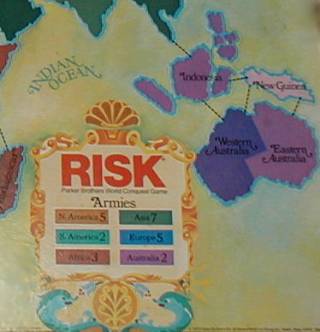Roy over at 79Soul has started a series of posts dealing with Intellectual Property. His first post sets the stage with an overview of the situation, and he begins to explore some of the issues, starting with the definition of theft. I’m going to cover some of the same ground in this post, and then some other things which I assume Roy will cover in his later posts.
I think most people have an intuitive understanding of what intellectual property is, but it might be useful to start with a brief definition. Perhaps a good place to start would be Article 1, Section 8 of the U.S. Constitution:
To promote the Progress of Science and useful Arts, by securing for limited Times to Authors and Inventors the exclusive Right to their respective Writings and Discoveries;
I started with this for a number of reasons. First, because I live in the U.S. and most of what follows deals with U.S. IP law. Second, because it’s actually a somewhat controversial stance. The fact that IP is only secured for “limited times” is the key. In England, for example, an author does not merely hold a copyright on their work, they have a Moral Right.
The moral right of the author is considered to be — according to the Berne convention — an inalienable human right. This is the same serious meaning of “inalienable” the Declaration of Independence uses: not only can’t these rights be forcibly stripped from you, you can’t even give them away. You can’t sell yourself into slavery; and neither can you (in Britain) give the right to be called the author of your writings to someone else.
The U.S. is different. It doesn’t grant an inalienable moral right of ownership; instead, it allows copyright. In other words, in the U.S., such works are considered property (i.e. it can be sold, traded, bartered, or given away). This represents a fundamental distinction that needs to be made: some systems emphasize individual rights and rewards, and other systems are more limited. When put that way, the U.S. system sounds pretty awful, except that it was designed for something different: our system was built to advance science and the “useful arts.” The U.S. system still rewards creators, but only as a means to an end. Copyright is granted so that there is an incentive to create. However, such protections are only granted for “limited Times.” This is because when a copyright is eternal, the system stagnates as protected peoples stifle competition (this need not be malicious). Copyright is thus limited so that when a work is no longer protected, it becomes freely available for everyone to use and to build upon. This is known as the public domain.
The end goal here is the advancement of society, and both protection and expiration are necessary parts of the mix. The balance between the two is important, and as Roy notes, one of the things that appears to have upset the balance is technology. This, of course, extends as far back as the printing press, records, cassettes, VHS, and other similar technologies, but more recently, a convergence between new compression techniques and increasing bandwidth of the internet created an issue. Most new recording technologies were greeted with concern, but physical limitations and costs generally put a cap on the amount of damage that could be done. With computers and large networks like the internet, such limitations became almost negligible. Digital copies of protected works became easy to copy and distribute on a very large scale.
The first major issue came up as a result of Napster, a peer-to-peer music sharing service that essentially promoted widespread copyright infringement. Lawsuits followed, and the original Napster service was shut down, only to be replaced by numerous decentralized peer-to-peer systems and darknets. This meant that no single entity could be sued for the copyright infringement that occurred on the network, but it resulted in a number of (probably ill-advised) lawsuits against regular folks (the anonymity of internet technology and state of recordkeeping being what it is, this sometimes leads to hilarious cases like when the RIAA sued a 79 year old guy who doesn’t even own a computer or know how to operate one).
Roy discusses the various arguments for or against this sort of file sharing, noting that the essential difference of opinion is the definition of the word “theft.” For my part, I think it’s pretty obvious that downloading something for free that you’d normally have to pay for is morally wrong. However, I can see some grey area. A few months ago, I pre-ordered Tool’s most recent album, 10,000 Days from Amazon. A friend who already had the album sent me a copy over the internet before I had actually recieved my copy of the CD. Does this count as theft? I would say no.
The concept of borrowing a Book, CD or DVD also seems pretty harmless to me, and I don’t have a moral problem with borrowing an electronic copy, then deleting it afterwords (or purchasing it, if I liked it enough), though I can see how such a practice represents a bit of a slippery slope and wouldn’t hold up in an honest debate (nor should it). It’s too easy to abuse such an argument, or to apply it in retrospect. I suppose there are arguments to be made with respect to making distinctions between benefits and harms, but I generally find those arguments unpersuasive (though perhaps interesting to consider).
There are some other issues that need to be discussed as well. The concept of Fair Use allows limited use of copyrighted material without requiring permission from the rights holders. For example, including a screenshot of a film in a movie review. You’re also allowed to parody copyrighted works, and in some instances make complete copies of a copyrighted work. There are rules pertaining to how much of the copyrighted work can be used and in what circumstances, but this is not the venue for such details. The point is that copyright is not absolute and consumers have rights as well.
Another topic that must be addressed is Digital Rights Management (DRM). This refers to a range of technologies used to combat digital copying of protected material. The goal of DRM is to use technology to automatically limit the abilities of a consumer who has purchased digital media. In some cases, this means that you won’t be able to play an optical disc on a certain device, in others it means you can only use the media a certain number of times (among other restrictions).
To be blunt, DRM sucks. For the most part, it benefits no one. It’s confusing, it basically amounts to treating legitimate customers like criminals while only barely (if that much) slowing down the piracy it purports to be thwarting, and it’s lead to numerous disasters and unintended consequences. Essential reading on this subject is this talk given to Microsoft by Cory Doctorow. It’s a long but well written and straightforward read that I can’t summarize briefly (please read the whole thing). Some details of his argument may be debateable, but as a whole, I find it quite compelling. Put simply, DRM doesn’t work and it’s bad for artists, businesses, and society as a whole.
Now, the IP industries that are pushing DRM are not that stupid. They know DRM is a fundamentally absurd proposition: the whole point of selling IP media is so that people can consume it. You can’t make a system that will prevent people from doing so, as the whole point of having the media in the first place is so that people can use it. The only way to perfectly secure a piece of digital media is to make it unusable (i.e. the only perfectly secure system is a perfectly useless one). That’s why DRM systems are broken so quickly. It’s not that the programmers are necessarily bad, it’s that the entire concept is fundamentally flawed. Again, the IP industries know this, which is why they pushed the Digital Millennium Copyright Act (DMCA). As with most laws, the DMCA is a complex beast, but what it boils down to is that no one is allowed to circumvent measures taken to protect copyright. Thus, even though the copy protection on DVDs is obscenely easy to bypass, it is illegal to do so. In theory, this might be fine. In practice, this law has extended far beyond what I’d consider reasonable and has also been heavily abused. For instance, some software companies have attempted to use the DMCA to prevent security researchers from exposing bugs in their software. The law is sometimes used to silence critics by threatening them with a lawsuit, even though no copright infringement was committed. The Chilling Effects project seems to be a good source for information regarding the DMCA and it’s various effects.
DRM combined with the DMCA can be stifling. A good example of how awful DRM is, and how DMCA can affect the situation is the Sony Rootkit Debacle. Boing Boing has a ridiculously comprehensive timeline of the entire fiasco. In short, Sony put DRM on certain CDs. The general idea was to prevent people from putting the CDs in their computer and ripping them to MP3s. To accomplish this, Sony surreptitiously installed software on customer’s computers (without their knowledge). A security researcher happened to notice this, and in researching the matter found that the Sony DRM had installed a rootkit that made the computer vulnerable to various attacks. Rootkits are black-hat cracker tools used to disguise the workings of their malicious software. Attempting to remove the rootkit broke the windows installation. Sony reacted slowly and poorly, releasing a service pack that supposedly removed the rootkit, but which actually opened up new security vulnerabilities. And it didn’t end there. Reading through the timeline is astounding (as a result, I tend to shy away from Sony these days). Though I don’t believe he was called on it, the security researcher who discovered these vulnerabilities was technically breaking the law, because the rootkit was intended to protect copyright.
A few months ago, my windows computer died and I decided to give linux a try. I wanted to see if I could get linux to do everything I needed it to do. As it turns out, I could, but not legally. Watching DVDs on linux is technically illegal, because I’m circumventing the copy protection on DVDs. Similar issues exist for other media formats. The details are complex, but in the end, it turns out that I’m not legally able to watch my legitimately purchased DVDs on my computer (I have since purchased a new computer that has an approved player installed). Similarly, if I were to purchase a song from the iTunes Music Store, it comes in a DRMed format. If I want to use that format on a portable device (let’s say my phone, which doesn’t support Apple’s DRM format), I’d have to convert it to a format that my portable device could understand, which would be illegal.
Which brings me to my next point, which is that DRM isn’t really about protecting copyright. I’ve already established that it doesn’t really accomplish that goal (and indeed, even works against many of the reasons copyright was put into place), so why is it still being pushed? One can only really speculate, but I’ll bet that part of the issue has to do with IP owners wanting to “undercut fair use and then create new revenue streams where there were previously none.” To continue an earlier example, if I buy a song from the iTunes music store and I want to put it on my non-Apple phone (not that I don’t want one of those), the music industry would just love it if I were forced to buy the song again, in a format that is readable by my phone. Of course, that format would be incompatible with other devices, so I’d have to purchase the song again if I wanted to listen to it on those devices. When put in those terms, it’s pretty easy to see why IP owners like DRM, and given the general person’s reaction to such a scheme, it’s also easy to see why IP owners are always careful to couch the debate in terms of piracy. This won’t last forever, but it could be a bumpy ride.
Interestingly enough, distributers of digital media like Apple and Yahoo have recently come out against DRM. For the most part, these are just symbolic gestures. Cynics will look at Steve Jobs’ Thoughts on Music and say that he’s just passing the buck. He knows customers don’t like or understand DRM, so he’s just making a calculated PR move by blaming it on the music industry. Personally, I can see that, but I also think it’s a very good thing. I find it encouraging that other distributers are following suit, and I also hope and believe this will lead to better things. Apple has proven that there is a large market for legally purchased music files on the internet, and other companies have even shown that selling DRM-free files yields higher sales. Indeed, the emusic service sells high quality, variable bit rate MP3 files without DRM, and it has established emusic as the #2 retailer of downloadable music behind the iTunes Music Store. Incidentally, this was not done for pure ideological reasons – it just made busines sense. As yet, these pronouncements are only symbolic, but now that online media distributers have established themselves as legitimate businesses, they have ammunition with which to challenge the IP holders. This won’t happen overnight, but I think the process has begun.
Last year, I purchased a computer game called Galactic Civilizations II (and posted about it several times). This game was notable to me (in addition to the fact that it’s a great game) in that it was the only game I’d purchased in years that featured no CD copy protection (i.e. DRM). As a result, when I bought a new computer, I experienced none of the usual fumbling for 16 digit CD Keys that I normally experience when trying to reinstall a game. Brad Wardell, the owner of the company that made the game, explained his thoughts on copy protection on his blog a while back:
I don’t want to make it out that I’m some sort of kumbaya guy. Piracy is a problem and it does cost sales. I just don’t think it’s as big of a problem as the game industry thinks it is. I also don’t think inconveniencing customers is the solution.
For him, it’s not that piracy isn’t an issue, it’s that it’s not worth imposing draconian copy protection measures that infuriate customers. The game sold much better than expected. I doubt this was because they didn’t use DRM, but I can guarantee one thing: People don’t buy games because they want DRM. However, this shows that you don’t need DRM to make a successful game.
The future isn’t all bright, though. Peter Gutmann’s excellent Cost Analysis of Windows Vista Content Protection provides a good example of how things could get considerably worse:
Windows Vista includes an extensive reworking of core OS elements in order to provide content protection for so-called “premium content”, typically HD data from Blu-Ray and HD-DVD sources. Providing this protection incurs considerable costs in terms of system performance, system stability, technical support overhead, and hardware and software cost. These issues affect not only users of Vista but the entire PC industry, since the effects of the protection measures extend to cover all hardware and software that will ever come into contact with Vista, even if it’s not used directly with Vista (for example hardware in a Macintosh computer or on a Linux server).
This is infuriating. In case you can’t tell, I’ve never liked DRM, but at least it could be avoided. I generally take articles like the one I’m referencing with a grain of salt, but if true, it means that the DRM in Vista is so oppressive that it will raise the price of hardware… And since Microsoft commands such a huge share of the market, hardware manufacturers have to comply, even though a some people (linux users, Mac users) don’t need the draconian hardware requirements. This is absurd. Microsoft should have enough clout to stand up to the media giants, there’s no reason the DRM in Vista has to be so invasive (or even exist at all). As Gutmann speculates in his cost analysis, some of the potential effects of this are particularly egregious, to the point where I can’t see consumers standing for it.
My previous post dealt with Web 2.0, and I posted a YouTube video that summarized how changing technology is going to force us to rethink a few things: copyright, authorship, identity, ethics, aesthetics, rhetorics, governance, privacy, commerce, love, family, ourselves. All of these are true. Earlier, I wrote that the purpose of copyright was to benefit society, and that protection and expiration were both essential. The balance between protection and expiration has been upset by technology. We need to rethink that balance. Indeed, many people smarter than I already have. The internet is replete with examples of people who have profited off of giving things away for free. Creative Commons allows you to share your content so that others can reuse and remix your content, but I don’t think it has been adopted to the extent that it should be.
To some people, reusing or remixing music, for example, is not a good thing. This is certainly worthy of a debate, and it is a discussion that needs to happen. Personally, I don’t mind it. For an example of why, watch this video detailing the history of the Amen Break. There are amazing things that can happen as a result of sharing, reusing and remixing, and that’s only a single example. The current copyright environment seems to stifle such creativity, not the least of which because copyright lasts so long (currently the life of the author plus 70 years). In a world where technology has enabled an entire generation to accellerate the creation and consumption of media, it seems foolish to lock up so much material for what could easily be over a century. Despite all that I’ve written, I have to admit that I don’t have a definitive answer. I’m sure I can come up with something that would work for me, but this is larger than me. We all need to rethink this, and many other things. Maybe that Web 2.0 thing can help.
Update: This post has mutated into a monster. Not only is it extremely long, but I reference several other long, detailed documents and even somewhere around 20-25 minutes of video. It’s a large subject, and I’m certainly no expert. Also, I generally like to take a little more time when posting something this large, but I figured getting a draft out there would be better than nothing. Updates may be made…
Update 2.15.07: Made some minor copy edits, and added a link to an Ars Technica article that I forgot to add yesterday.




